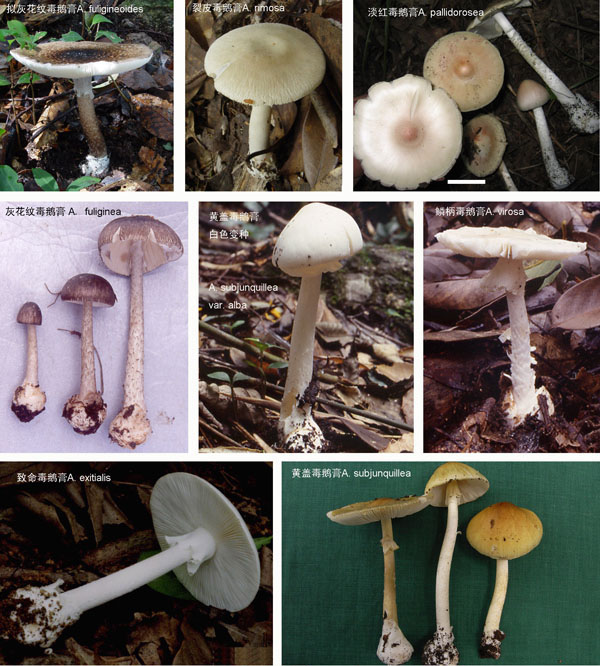Being low in calories and high in proteins, fibre, vitamins and minerals, a large number of wild mushrooms are valuable for food, and, thus, the consumption of wild edible mushrooms, a popular delicacy in many countries, has been increasing very rapidly.
Mushroom poisoning cases have been frequently reported in East Asia or even in other parts of the world. Some of the toxins in the mushroom can’t be destroyed even after properly cooked. Because mushrooms are very diverse in morphology, color, smell and habit, it is even very difficult for professionals to separate toxic mushrooms from edible ones based on macro-morphological characters alone. Over 90% fatal mushroom poisoning is caused by lethal amanitas, species of the genus Amanita (Fungi).
In collaboration with Professor Yang Zhuliang and with the help of colleagues, Doctor Zhang Ping, who held a postdoctorial position at that time, studied the species diversity of lethal amanitas in East Asia based on morphological and molecular phylogenetic data. The results revealed that at least nine phylogenetic taxa of lethal amanitas exist in the region. Among them, five were identical to previously known morphological taxa including the “Tropical Destroying Angel” A. exitialis, the “East Asian Brown Death Cap” A. fuliginea, the “East Asian Death Cap” A. subjunquillea, the “East Asian Destroying Angel” A. subjunquillea var. alba and the “Destroying Angel” A. virosa; three new taxa, the “False Brown Death Cap” A. fuligineoides, the “Splitting Death Cap” A. rimosa and the “Pale-Rose Death Cap” A. pallidorosea were described. The occurrence of the “Destroying Angel” A. virosa in East Asia, a well-known lethally poisonous mushroom originally described from Europe, was confirmed by both ITS sequences and morphology. Another lethal species native to Europe, the “Death Cap” A. phalloides, was determined as closely related to A. subjunquillea from East Asia. Amanita oberwinklerana was treated in Amanita sect. Phalloideae from a morphological point of view, but appeared to be a member of section Lepidella by the analyses of sequences from both the ITS regions and the large subunit of nuclear ribosomal RNA gene.
This study may make an active contribution to the recognition of lethal amanitas and the prevention of lethal mushroom poisoning in East Asia. (Source: Zhang P., et al. 2010. Lethal amanitas of East Asia characterized by morphological and molecular data. Fungal Diversity 42: 119-133), with the financial supports by the Joint Funds of the National Natural Science Foundation of China and Yunnan Provincial Government (Grant No. U0836604), the National Basic Research Program of China (973 Program, No. 2009CB522300), and other funds.

Lethal Amanitas in East Asia (Picture by Yang Zhuliang)




